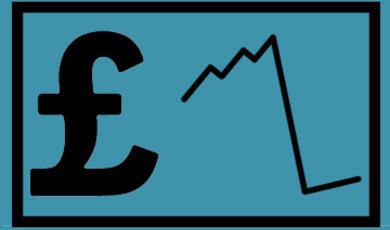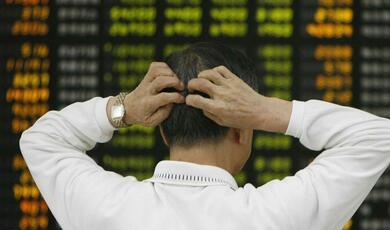How to Value a Stock
Share
- Details
- Text
- Audio
- Downloads
- Extra Reading
How do you value stocks? Finance textbooks argue that you should look at their dividends. But many stocks don’t pay dividends, and even if they do, it’s hard to forecast what they’ll be in the future. And newspapers talk about a stock’s 'price-to-earnings' ratio which seems nothing to do with dividends.
This lecture will explore the essentials of stock valuation, explain what causes stocks to rise and fall so wildly, and demystify the jargon used by finance practitioners.
Download Text
How To Value a Stock
Professor Alex Edmans
17th May 2022
Introduction
Stock prices change every day. But what causes them to rise and fall? And when thinking about whether to buy a stock, how do you know whether it’s good value? These are the questions we’ll consider in today’s lecture.
A stock is an investment, that costs money today and gives you money in the future. In Lecture 3, How to Take Financial Decisions, we introduced the Net Present Value methodology to value investments. But today we’ll go beyond that lecture in two ways:
- We’ll take into account risk, applying the insights of Lecture 4, How to Measure and Manage Risk. This is critical when valuing a stock, since the dividends that a stock pays are risky.
- We’ll take into account more realistic cash flows. In Lecture 3, we assumed that the cash flows from an investment either stay the same each year or grow at the same rate each year. But dividends may fluctuate wildly – in the pandemic, some companies cut their dividend to zero.
And while we’ll focus explicitly on stocks, the two above extensions apply to most investments that either people or companies may make. When a citizen decides to go to university, or a company chooses to build a new factory, the future benefits from that investment are uncertain and likely to change from year to year.
The Cash Flows from a Stock
In Lecture 3, we saw that the value of any investment is the present value of its future cash flows, PV=t=1∞Ct1+rt. So, what are the cash flows from a stock?
In Lecture 1, How to Save and Invest, we explained how a shareholder is the residual claimant of a company, getting what’s left after everyone else has been paid off. Here’s an example:
Company
Revenues 1,000
Expenses (300)
Profit Before Tax 700
Tax @ 20% (140)
Profit After Tax / Net Income / Earnings 560
Earnings Per Share (100 shares) 5.6
A company sells widgets, earning revenues. Its expenses include buying raw materials and hiring workers to turn them into widgets. After paying taxes, the profits after tax, also known as net income or earnings is 560. This is the “bottom line” that belongs to shareholders – it’s how much shareholders’ wealth has increased by. If there are 100 shares, the owner of 1 share is better off by £5.60.
But not all of that £5.60 is actually paid out to shareholders. Let’s say £3.60 of that is reinvested within the company, to buy a new widget machine. Then, only £2 is paid out to shareholders in the form of a dividend. Shareholders are still better off by £5.60, since the machine increases the value of their company and allows them to make more money in the future, but they only receive £2 of that now.
- By analogy, consider a landlord who receives rent, pays rental agency fees and taxes, and is left with £5.60. She spends £3.60 to renovate the kitchen and pays herself the remaining £2. She’s still £5.60 better off, since the new kitchen improves the value of her house and allows her to charge more rent in the future, but only receives £2 now.
This means that the cash flow that one share actually pays out is the dividend of £2, not the total earnings of £5.60. So, the cash flows that we plug into the present value formula, PV=t=1∞Ct1+rt, are the dividends of a company, Dt, not the earnings. This gives the price of the stock as:
P=t=1∞Dt1+rt
Why do we only take into account dividends, not earnings? Because dividends are what the shareholder actually receives. The value of any investment is the cash that you get from it, and the cash that comes out of the company is £2 this year – just like the cash the homeowner actually receives is £2.
- Putting this another way, if we claimed that the shareholder receives £5.60 this year, we’d be double counting. We’d be counting the £3.60 both this year (as it’s part of the £5.60) and in the future (since it’s reinvested and allows the company to make more money in the future).
OK, so you’re (hopefully) convinced that the price of a stock is the present value of all future dividends, as shown in the formula above. But that formula seems to assume that you’ll actually collect every single dividend from now (t=1) to the end of time (t=∞). That requires you to hold onto the stock until the end of time, which seems a pretty big assumption. While Oasis boldly sang in 1994 that “you and I are gonna live forever”, no-one has (yet) figured out a way to do that. And you might not even hold onto the stock for the entirety of your lifetime but sell it in a few years to pay for your kids’ education.
But it turns out that the magic formula continues to hold even if you intend to sell the stock early. For example, say you wish to sell the stock after 2 years. You’ll explicitly collect the dividend at the end of the first year, D1, and the dividend at the end of the second year, D2. And then you’ll sell it at the end of year 2 for a price P2. So, the value of the stock to you is given by:
P0=D11+r+D21+r2+P21+r2
i.e., the sum of the first-year dividend D1, the second-year dividend D2, and the resale price P2, all discounted back to today.
But how much will you get when you sell the share at the end of year 2? Any new owner of the stock will receive all the dividends from year 3 until the end of time. So, its value to him at the end of year 2 is given by:
P2=t=3∞Dt1+rt-2
We discount by t-2 in the denominator since we’re calculating the value as of year 2. For example, we only need to discount the dividend in year 3 by 3-2 = 1 year to bring it back to year 2.
Plugging this into the earlier equation, we get:
P0=D11+r+D21+r2+t=3∞Dt1+rt-21+r2
P0=D11+r+D21+r2+t=3∞Dt1+rt
P0=t=1∞Dt1+rt
i.e., the same formula as before.
Stepping back from all the maths, what’s the common sense behind this result? The value of a stock to you is the discounted value of all future dividends, regardless of when you intend to sell the stock – and even if you have no idea when you’ll sell the stock. You care about all the future dividends the stock pays out. Some of them you’ll explicitly receive – they’ll actually be paid out to you. The rest you’ll implicitly receive – they’ll affect the price you get when you sell the stock.
It’s worth pausing a moment to highlight the significance of this result. People often criticise the stock market for being short-termist, and one of their “smoking gun” pieces of evidence is that many investors hold onto stocks for less than a year, so they don’t care about a company’s performance beyond that year. But this doesn’t make sense. You still care about the company’s long-term performance, because it affects the price at which you’ll be able to sell the stock. Similarly, critics like to accuse finance textbooks of teaching “short-term profit maximisation”. As the author of a finance textbook, I’d like to claim that competitor books do this, but this is not true at all. The value of a stock depends on all its future dividends, literally to the end of time (hence the ∞ in the summation) – not just short-term dividends. Similarly, Lecture 3 (How to Make Financial Decisions) stressed that, when deciding whether to take a project, a financial manager should take into account all its future cash flows. No textbook recommends that she make decisions based on short-term profits.
A Simple Shortcut and an Example
So, we’ve trumpeted how the formula P=t=1∞Dt1+rt applies regardless of how long we hold onto the stock for. But that seems a bit of a hollow victory. The formula seems pretty impractical to use, as it requires you to forecast dividends from now until the end of time. Recall from the earlier table (where we calculated the £5.60 of earnings) that, to forecast dividends, you need to forecast revenues, expenses, taxes, and reinvestment. You might only be able to do this with any reasonable degree of accuracy for a couple of years.
However, recall from Lecture 3 that we introduced a shortcut. If we have a growing perpetuity – a stream of cash flows that grows at the same rate g every year, then the formula collapses to
P=D1r-g
where D1 is the dividend at the end of the first year, g is the growth rate of the dividend from year 1 onwards, and r is the cost of equity given by the Capital Asset Pricing Model (see Lecture 4).
Let’s look at an example:
Tesco has just paid a dividend of 3p per share and its beta is 0.5. Analysts are expecting the dividend to grow by 2% each year forever. The current risk-free rate is 1% and the expected excess return on the FTSE All-Share is 4%. What should Tesco’s share price be?
The first step is to calculate rT, the cost of equity for Tesco. Remember that the CAPM formula is rT = rf + β(rm-rf).
So, plugging in gives rT = 1% + 0.5(4% - 1%) = 2.5%.
Actually, it doesn’t. The question says that 4% is the expected excess return. The excess return is already after deducting the risk-free rate. So, 4% refers to rm – rf, not just rm. So, there’s no need to subtract the 1%. Thus, we have rT = 1% + 0.5(4%) = 3%.
The next step is to use the growing perpetuity formula P=D1r-g. Plugging in gives P=33%-2% = 300p.
Actually, that’s wrong also. The question says that Tesco has just paid a dividend. The growing perpetuity formula requires D1, the dividend in 1 years’ time. This makes sense – if you buy the stock now, you won’t receive the dividend that’s just been paid.
- This also illustrates a general principle in finance – valuations are all about future cash flows of a company, not past cash flows. When you buy a company, what you get is what it gives you in the future, not what it gave in the past. Similarly, a football team deciding to sign a striker only cares about the goals he will score for your club in the future – the goals he’s scored in the past are irrelevant (except for helping you predict how many he’ll score in the future). Thus, how much you’ll pay for him depends on his expected future goals, and how much they’ll be worth to the club.
So, what’s D1? If last year’s dividend was 3, and the growth rate is 2%, then next year’s dividend will be 3 × 1.02 = 3.06p. Thus, we have P=3.063%-2% = 306p.
You then compare this valuation to the current share price of Tesco. If the current share price is below 306p, you should buy it; otherwise, you should not.
How to Value Stocks in Practice
Thus far, we’ve developed two rather extreme methods:
- The exact “academic” formula: P0=t=1∞Dt1+rt. This is precise, but impractical as it requires you to forecast every single dividend.
- The “back-of-the-envelope” constant growth formula: P0= D1r-g. This is practical and simple, but imprecise as it only holds if the dividend grows at the same rate every year until the end of time.
Recall that forecasting dividends requires you to forecast revenues, expenses, taxes, and reinvestment. You might only be able to do this with any degree of accuracy for a couple of years. Thus, in practice, we use a method in between these two extremes:
- Forecast dividends over the next T years
- Then estimate a “terminal value” for how much the stock is worth after T years. Let’s call this TVT.
Then, the stock price is given by the (discounted) sum of these two components:
P0=t=1TDt1+rt+TVT1+rT
Estimating Terminal Value – Perpetual Growth Method
How do we estimate terminal value – how much the stock is worth after T years? To answer the question, let’s think about how to estimate the value of anything.
Consider the following scenario. After working hard for a few years after university, you’ve saved a tidy sum of money. While you’re tempted to blow it on a round-the-world cruise, you’ve decided to use it to step onto the first rung of the property ladder. You’ve found your dream apartment, 15 Peninsula Court. It’s only 5 years old so you shouldn’t need to worry about leaking pipes or faulty boilers, its decor is minimalist but characterful, and it’s close to the office meaning you can roll out of bed and punch in within half an hour. The current tenants move out next month and the owner’s looking to sell after that. But how do you know whether she’s taking you for a ride with the asking price?
There are two ways to figure out what the apartment is worth:
- Fundamentals. An apartment’s fundamental value stems from what you could rent it out for in the future – or equivalently what you’d save in rent by buying rather than letting it. You could start with the rent paid by the current tenants and estimate how much it might rise going forward. You then discount these future rents by the opportunity cost – how much you’d earn by putting your money into investments of similar risk to the apartment – to estimate its value.
- Comparables. Look at other similar apartments in the same neighborhood. They’ll be of different sizes, so you adjust for that by dividing by their size and calculating their price per square foot. If similar apartments are trading at £500 per square foot, and the one you like is 700 square feet, then £350,000 is a reasonable ballpark.
These two approaches to valuing an apartment are similar to the two approaches to estimating a stock’s terminal value. Let’s apply this first method to a stock. The “rent” that a stock gives you is its dividend. So, you value the stock after T years by estimating the dividends that it will pay in the future – which is the method we alluded to in the last section. Assume that from year T+1, dividends grow at a constant rate g forever. Then we can use the growing perpetuity formula:
TVT=DT+1r-g
Plugging this into the last equation gives:
P0=t=1TDt1+rt+11+rTDT+1r-g
This is known as the perpetual growth method, since we assume that the dividend grows perpetually at a constant rate.
Let’s use this method by studying a more complex version of the earlier Tesco example:
Tesco has just paid a dividend of 3p per share and its beta is 0.5. Analysts are expecting the dividend to grow by 2% in the next two years due to recovery from the pandemic, before settling into a long-term growth rate of 1.5%. The current risk-free rate is 1% and the expected excess return on the FTSE All-Share is 4%. What should Tesco’s share price be?
The underlined part is what’s changed. No longer do we assume that Tesco is growing at 2% forever, but only for the first two years; then it grows at 1.5%. So, its dividends are given below:
Year. Dividend Growth
0 3 2%
1 3.06 2%
2 3.1212 1.5%
3 3.16802 1.5%
… … 1.5%
∞ 1.5%
Using the above formula, with T=2, we have:
P0=t=1TDt1+rt+11+rTDT+1r-g
P0=3.061.03+3.12121.032+11+rT3.168023%-1.5%
P0=205p
Note that the valuation is almost 1/3 lower than the old valuation of 306p. Simply reducing the long-term growth rate from 2% to 1.5% has a huge effect on the value of a stock. This is because of compounding – the slightly lower growth rate applies forever, and its effect adds up over time.
Estimating Terminal Value – Comparable Companies Method
The second way to estimate the value of an apartment is to look at comparable apartments. This is the second way that we estimate terminal value and is known as comparable companies method. You find a set of similar companies and use their prices to guide what your business is worth.
But what’s the yardstick you use to compare those companies to yours? For the apartment, we didn’t compare 15 Peninsula Court to other apartments with the number 15, nor other apartments built 5 years ago. The main factor that drives the value for an apartment – the value driver of an apartment – isn’t its number, nor even its age, but its size. So, we used the price per square foot of similar apartments to estimate the value of your dream home.
What’s the relevant value driver for a company? It depends on the business model. Here are some examples:
- Book Value. For some companies, their main worth stems from the book value of their assets – how much they are worth on a company’s books (which is typically how much you bought them for minus depreciation – a deduction for wear and tear). The value of a real estate firm depends on the properties it owns; the value of a bank stems from the loans it’s made and expects to be repaid. Then, the relevant ratio is price-to-book value, or P/B.
- P/B won’t be appropriate for companies whose main assets are intangible and not on the balance sheet – such a start-up tech firm whose value arises from its employees and their ideas. Ideas are developed, not bought, and so do not appear on the balance sheet; similarly, a company does not own its employees, so they aren’t on the balance sheet either.
- Earnings. For other companies, earnings are the best guide to what they’re worth – recall how they’re more forward-looking than book values. Then, the relevant ratio will be price-to-earnings, or P/E. Different types of P/E ratios are quoted depending on what earnings we put in the denominator:
- Sales. But what if you’re trying to value a start-up that doesn’t make profits yet? For a start-up, the main value driver might be sales, because they indicate its potential to generate future earnings. Thus, if the business has no debt, the relevant multiple is Price/Sales.
- If the company is at an even earlier stage and is focusing on acquiring customers rather than increasing sales, the number of customers might be most relevant. For example, the messaging service What’s App focused on building its user base long before it was able to monetise it. Then, you’d look at Price/Customer.
Let’s use the comparable companies method by studying a more complex version of the earlier Tesco example:
Tesco has just paid a dividend of 3p per share and its beta is 0.5. Analysts are expecting the dividend to grow by 2% in the next two years due to recovery from the pandemic. They’re unable to forecast dividends beyond two years, but they estimate its earnings at the end of year 2 will be 12p. Other supermarkets are trading at a P/E ratio of 20. The current risk-free rate is 1% and the expected excess return on the FTSE All-Share is 4%. What should Tesco’s share price be?
Let’s use the formula:
P0=t=1TDt1+rt+TVT1+rT
with T=2. Dividends are given as follows:
Year Dividend Growth
0 3 2%
1 3.06 2%
2 3.1212 1.5%
Thus, we have:
P0=3.061.03+3.12121.032+20×121.032
P0=232p
© Professor Edmans 2022
Some of this summary is adapted from Principles of Corporate Finance by Richard Brealey, Stewart Myers, Franklin Allen, and Alex Edmans (14th edition, 2022). Please see the lecture for additional details, such as why price-to-earnings ratios differ across companies.
Part of:
This event was on Tue, 17 May 2022
Support Gresham
Gresham College has offered an outstanding education to the public free of charge for over 400 years. Today, Gresham College plays an important role in fostering a love of learning and a greater understanding of ourselves and the world around us. Your donation will help to widen our reach and to broaden our audience, allowing more people to benefit from a high-quality education from some of the brightest minds.


 Login
Login






